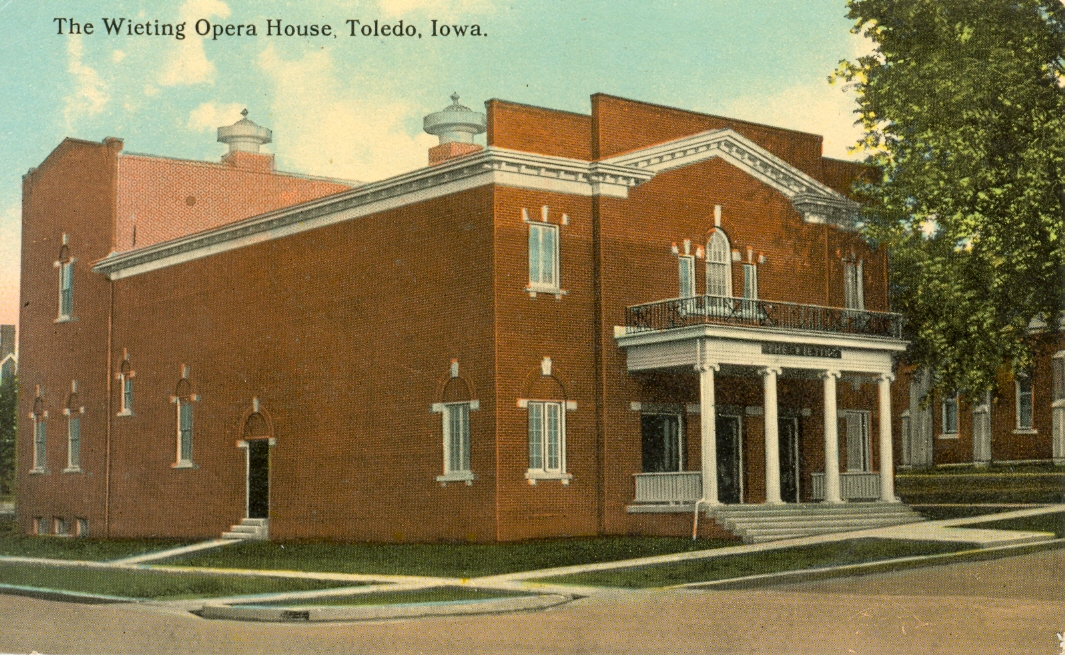Brilliant "Opening Scene"
Described as the “latest in opera house construction,” the Wieting had been built through the spring and summer of 1912 for a total cost of $20,000. A brick building, 50 feet x 100 feet, it would seat 650 - with all the features of a fine opera house: stage, orchestra pit, main floor, balcony, two boxes, dressing rooms, a ticket office, toilets, and rest rooms.
The contract for construction of the theatre was awarded in mid-March, 1912, to C. W. Ennis. Sherman Ennis directed the construction and supervised a number of tradesman and subcontractors including: James Bridge, carpentry work; A. H. Conant, roofing and plumbing; Roy Davis electrical wiring; G. M. Berger and Son, painting; Clarence Brainard, decorating.
The Wieting immediately attracted high-grade entertainment. Located along the main line from Chicago through Cedar Rapids and Marshalltown to Omaha, the theatre was large enough to attract the best performers who could turn a nice profit on a weeks stand. People who remember those early days, remember the Opera House as “always busy.” There were minstrel shows, lyceum courses, class plays (high school and college), graduations, political conventions, and medicine shows. There was once a Ku Klux Klan gathering in the theatre and always a busy “Fair Week” with shows every night and a Saturday matinee.

If you are a Tama-Toledo resident, then perhaps you remember the Juvenile Bostionians and the Florida Voss Hall players? How about Beech Green? Mr. and Mrs. Art Ludwig? Do you remember the “war tax” paid on all entertainment programs in 1917 and 1918? These things and many others are recorded in “the books.”